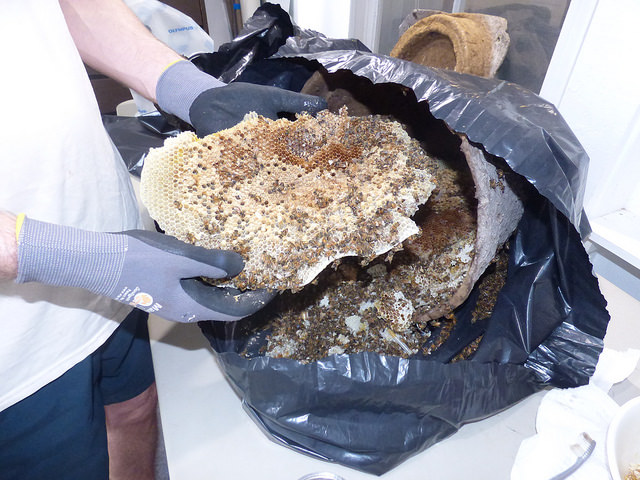Genome of Honey Bee Parasites Recently Published
January 09, 2019
Soon, researchers and beekeepers will get to welcome the reveal of a genome for the small hive beetle (SHB), thanks to a team of scientists with the Agricultural Research Service (ARS). The reason for beekeepers to get excited is that small hive beetles have created major problems for honey bees, and few treatments have proven to be effective against them. However, the SHB’s genome, which is an organism’s entire DNA sequence, was published recently in the scientific journal GigaScience. This genome could provide incredible insight into the parasite, leading to more targeted, better control methods, such as insecticidal treatments or even breeding/genetic solutions.
Small hive beetles have strong gene-based systems, which allow them to detoxify many popular pesticides. The newly published genome will give researchers a more accurate understanding of those detoxification genes, leading to more effective options for control treatments. "The big challenge is identifying control methods that will target SHB’s but not harm honey bees," says Jay Evans, a geneticist who led the genome project and leads the ARS Bee Research Lab as well. "One strategy is to look for insecticides that hit pathways in the genome where the SHB has few or no detoxification genes. It would be even better if an insecticide could be identified for which the honey bee has detoxification genes but that the SHB doesn't.”
Native to sub-Saharan Africa, SHB’s have spread to other locations, such as North America, Australia, the Philippines, and Europe. These beetles were first seen in the U.S. in 1996, with the SHB even being responsible for over 20,000 lost beehives in Florida in 1998 alone. In the present day, small hive beetles have spread throughout America, and it’s an especially huge problem for honey production and queen breeders. SHB’s will eat anything inside a colony—pollen, honey, brood, combs, dead bees—and cause the honey inside to ferment. If the SHB’s numbers inside a high grow enough, the hive’s bees will abandon ship and collapse it.
One new avenue the small hive beetle’s genome has created for researchers to follow is discovering how the beetles find beehives, specifically the pheromones or similar smells SHB’s use to target colonies. Also, while there are roughly 350,000 beetle species, there are only seven known beetle genomes, including small hive beetles, that have been finished and published.
On a final note, finishing the SHB’s genome has even more significance whenever you remember that other species among this beetle’s close relatives include the invasive, destructive Asian long-horned beetle as well as other sap beetles, which are pests for sweet corn, strawberries, tomatoes, and other vegetable and fruit crops.
Photo Courtesy of Forest and Kim Starr via Creative Commons License


.jpg)



